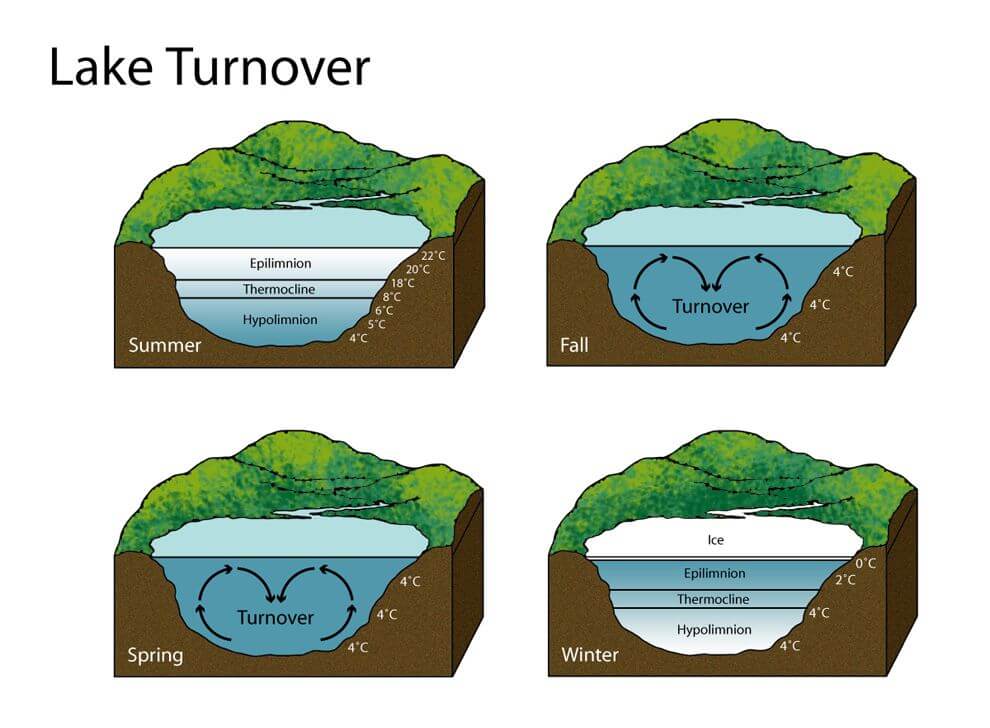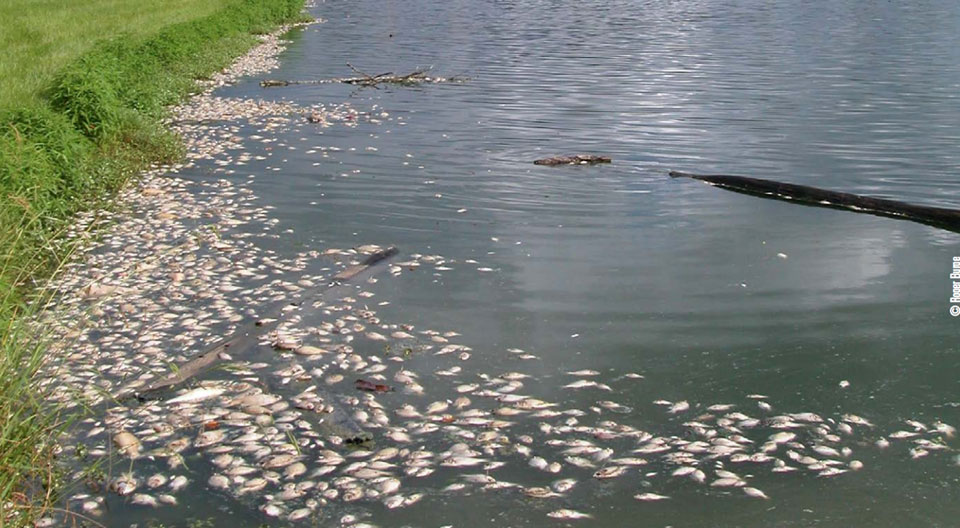Learning about pond turnover warning signs and prevention should be on every Tennessee pond and lake owner’s agenda. When a pond “flips,” oxygen-poor bottom water and trapped gases like hydrogen sulfide rush to the surface, stressing fish and sometimes causing mass die‑offs. Here’s what pond turnover means, how to spot it early, the real dangers, and why bottom-diffused aeration is your best insurance policy.

What Is Pond (or Lake) Turnover?
During the summer, ponds stratify: warm, oxygenated water sits on top, while colder, low-oxygen water sinks. A sudden cold front, heavy rain, or strong winds can mix those layers in hours, a phenomenon known as turnover. The newly mixed water often has very little dissolved oxygen and may contain toxic gases, causing fish and beneficial microbes to suffocate.
Pond Turnover Warning Signs and Prevention (at a glance)
- Watercolor shifts to gray or chocolate-brown and appears “soupy.”
- Rotten-egg (sulfur) or swampy odors rise from the surface.
- Fish gasp at the surface or congregate near inflows.
- Bubbles or black muck burp from the bottom after a storm.
- A recent cold snap, hurricane remnant, or downpour preceded the change.
Keeping the water gently mixed with bottom-diffused aeration prevents these crises by disrupting stratification before it gets dangerous.
Why Turnover Is Dangerous
When low-oxygen bottom water reaches the surface, dissolved oxygen levels can drop significantly within minutes. Anaerobic zones release hydrogen sulfide and ammonia. Both of which are toxic to fish at even tiny concentrations. The combination causes sudden fish kills, algae die-offs, and nasty odors.
How to Spot Trouble Early (And Act Fast)
- Sniff test: Sulfur or musty odors mean bottom water or decaying blooms are at the surface.
- Jar test: Scoop pond water into a clear jar. If it stays murky or green after 24 hours, you’re dealing with suspended solids or an active bloom that can crash oxygen when it dies.
- Watch the fish: Surface gasping or schooling near inlets is a sign of low oxygen levels.
- Meter it: A handheld DO/temp meter lets you see stratification and oxygen drops before fish feel it.
If readings drop below ~3 mg/L, start emergency aeration (using gas-powered pumps or surface fountains) and consult professionals for a recovery plan.
Preventing Pond Turnover (and the Bills That Follow)
- Install bottom-diffused aeration: A compressor on shore sends air to diffusers on the bottom, constantly circulating the water column. This “de‑stratifies” the pond and keeps oxygen near the sediments.
- Reduce nutrient loading: Fewer nutrients mean fewer algae blooms and less decaying muck to strip oxygen during mixing events.
- Schedule monthly inspections: After major storms, inspect inlets/outlets, note any odors, and log changes in clarity—small clues can prevent significant losses.
- Plan winter strategies: Even ice-country ponds can flip when snow blocks light and oxygen; aeration keeps an opening and circulation under ice.
What Aquatic Weed Wizards Can Do
Serving East & Middle Tennessee, we design and install bottom-diffused aeration as well as provide monthly stormwater/pond inspections so turnover never blindsides you. Need help now? Call 865‑622‑8282 or request a site visit.

